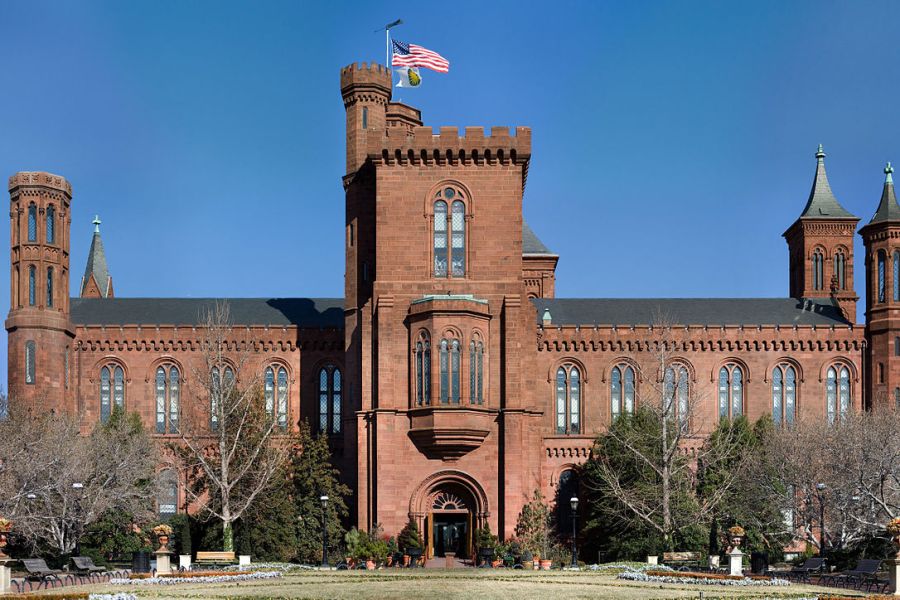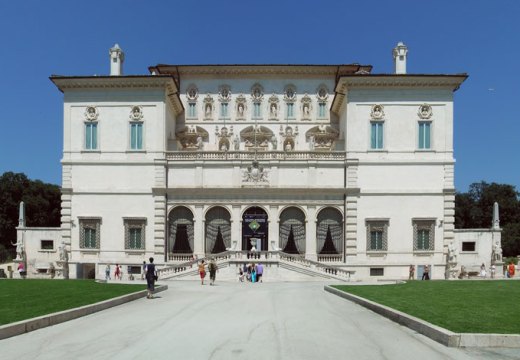From the June issue of Apollo: preview and subscribe here
The American museum has announced plans to open an outpost in the cultural quarter being built in the former Olympic Park. But is a satellite museum suitable for London, and is this the best site for it?
Neale Coleman
Chair of the London Legacy Development Corporation
The plan to open the Smithsonian Institution’s first museum abroad in east London represents not only an opportunity to enrich the lives of all who visit, but also a unique homecoming. James Smithson was a British pioneer and the epitome of the Renaissance man. His life was devoted to the study of the natural world as a chemist and mineralogist. Were it not for an unusual clause in his will bequeathing his entire fortune for the creation, in the United States of America, of a foundation to ‘further the increase and diffusion of knowledge’ then we would know him only for the mineral named in his honour, Smithsonite, and for coining the term ‘silicate’.
His bequest has left the USA and the world with a wondrous collection of 19 museums and galleries, the National Zoological Park and nine research facilities. The total number of objects, works of art and specimens at the Smithsonian is estimated at 137 million. Only a fraction of the collection can be displayed at any one time. Now it seems that London may have the chance to share in that vast collection through permanent and special exhibitions based in what has been dubbed ‘Olympicopolis’, in the heart of Queen Elizabeth Olympic Park.
Olympicopolis is more than a piece of intelligent urban regeneration ensuring a lasting legacy from the London 2012 Olympic and Paralympic Games. It takes its inspiration from the museums, research bodies and universities that were created in South Kensington after the Great Exhibition of 1851. Prince Albert, its patron, sought to co-locate scientific, artistic and cultural institutions: the Royal College of Art, the Royal College of Music, the Natural History Museum; Imperial College; and, of course, the Victoria and Albert Museum.
The total contribution of these institutions to British GDP is immense, their influence and input on industry huge, and their cultural impact incalculable. Jony Ive, the designer of the iPhone, honed his eye for design by studying the marvels on display at the Victoria and Albert Museum with his silversmith father. Apple’s success and status demonstrates very clearly this fundamental relationship between art and industry.
Olympicopolis seeks to create a legacy as outstanding as that of 1851 – bringing together the artists, designers, and tech wizards currently spread out across east London and beyond. The aim is to create an area of scientific, academic, cultural, artistic and creative activity. The design of the buildings will encourage collaboration and interconnection so that the experience for visitor, student and academic alike is of the highest standard.
In purely financial terms, the scheme is expected to deliver 3,000 jobs, 1.5 million additional visitors and £2.8 billion of economic value to the national economy. University College London is building a £300m campus and the world’s top architects are competing to design a new culture and education complex. Sadler’s Wells, the London College of Fashion and a new Victoria and Albert Museum will be at the centre of this new scheme. And, in joining them, the Smithsonian will also follow the lead of other eminent museums around the world. The Louvre is opening a new branch in Abu Dhabi this year; the Guggenheim has spread out from its first museum in New York to an acclaimed outpost in Bilbao, and work to build a museum in Abu Dhabi is underway.
These cultural institutions fulfil a living, civic purpose and through the objects they will display, and their work in education, research and conservation, they will create a place to stretch the mind. These outposts will also fulfil a quasi-diplomatic purpose, helping to create understanding and appreciation of different cultures and practices, something that we need to encourage and foster.
The Smithsonian will draw from home and overseas people eager to see and study artefacts previously held thousands of miles away and accessible to only a few from these isles. Among these visitors and students will be our next generation of artists, scientists and captains of industry and, perhaps, the next Jony Ive.
Edwin Heathcote
Architecture and design critic of the Financial Times
James Smithson (1765–1829) was a typically inquisitive mind from a period in which British scientists set the global agenda for research and invention against the background of an exploding industrial revolution. He studied the venom of snakes and the composition of women’s tears. He studied volcanoes and electricity and developed a new method for making superior coffee. Science and knowledge was used to fuel industry and, by extension, the capitalism that made Britain so wealthy. Smithson was a nomadic soul, travelling around Europe to study, research and explore. Born in Paris and educated at Oxford, he was in France again for the revolution and was taken prisoner during the Napoleonic Wars. He died in Genoa and, via his nephew, his half-million dollar bequest ended up in America and set in motion the Smithsonian, which became the official museum of the United States. Is there not, then, a kind of poetic circularity in the institution founded on Smithson’s wealth returning to his native country?
The justification for encyclopaedic museums, like the British Museum or the Smithsonian, has always been that these are not national institutions, but global ones – resources for the world. The only way they can justify their histories of colonial plunder, dubious acquisition, robber-baron philanthropy and so on, is through the assertion that they are open, accessible places, concerned with the diffusion of knowledge, not national borders. The British Museum would find it impossible to justify keeping the Parthenon Marbles without this caveat; other museums are struggling with aboriginal and native artefacts. If the global nature of a certain kind of museum is now the best argument for its continuing existence, then it should achieve these ambitions through international expansion.
This is not the first example of this kind of cultural franchising of course, from Bilbao’s Guggenheim to the museum blockbusters of Saadiyat Island, museological colonialism is thriving. But in London’s case the relationships are rather more balanced. The usual course of action is that a non-player recruits a big-name institution to buy in cultural prestige, expertise and access to collections. In the case of London and the Smithsonian, this is already a city full of culture and, while the UK may not be able to match the funding of the big US museums, the capital’s are in the same ball park.
Biennales, blockbuster shows, and huge-scale installations and chi-chi openings now are thoroughly international events. It seems almost anachronistic to ask if institutions should be cooperating internationally in this way. Neil MacGregor at the British Museum showed how the museum could be used as a sophisticated tool of cultural diplomacy where politics had become mired in entrenched positions – most notably with the loan of the Cyrus Cylinder to Iran. Concerns about losing the specificity of a place now look rather parochial – particularly when viewed against Smithson’s transatlantic heritage. But there is one proviso: that is the rather old-fashioned idea of this part of east London becoming an arts quarter. The Smithsonian would be a single component in what used to be known as an ‘arts complex’ or an ‘arts centre’, which is being used here to anchor this post-Olympic regeneration project in something more than the language of real-estate speculation, to cloak and accelerate its gentrification.
The question is whether this kind of arts complex is still relevant at all, especially since London is not short of arts infrastructure. And the corollary to this question is what kind of building this might be. The Gulf States have a monopoly on gigantic new examples of cultural architecture and has, in a way, made what used to be known as the ‘icon’ look rather tawdry, like an institution that is trying too hard. The architecture of the spectacular is beginning to suggest a lack of content.
If the Smithsonian can counter these caveats in an intelligent, unostentatious building that allows the UK and the USA an even deeper cultural communication, I struggle to see a counterargument. A London Smithsonian with access to those extraordinary collections would be a very welcome thing.
Click here to buy the latest issue of Apollo
Related Articles
Should we be cynical about international museum franchises?
How Neil MacGregor saved the British Museum
Unlimited access from just $16 every 3 months
Subscribe to get unlimited and exclusive access to the top art stories, interviews and exhibition reviews.














![Masterpiece [Re]discovery 2022. Photo: Ben Fisher Photography, courtesy of Masterpiece London](http://www.apollo-magazine.com/wp-content/uploads/2022/07/MPL2022_4263.jpg)
Has the Fitzwilliam lost the hang of things?